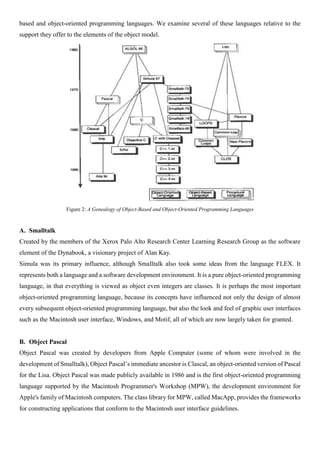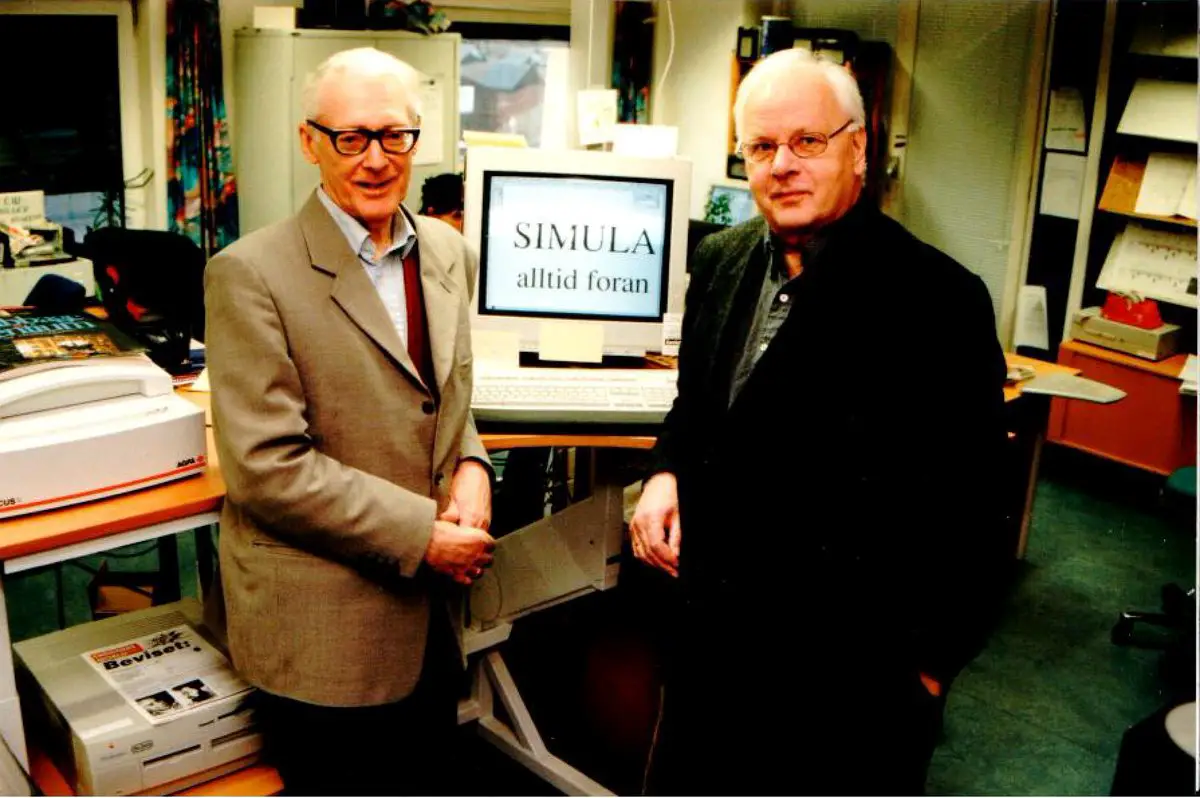The Birth of Object-Oriented Programming (OOP)

In the annals of computer science, the creation of Simula in 1967 by Kristen Nygaard and Ole-Johan Dahl stands as a pivotal moment. Simula became the progenitor of object-oriented programming (OOP), a paradigm shift that revolutionized software development.

Key Innovations of Simula

Simula introduced several fundamental concepts that became synonymous with OOP:
- Classes and Objects: Simula introduced the concept of classes as blueprints for creating objects. Objects represent real-world entities and encapsulate data and behavior.
- Inheritance: Simula allowed classes to inherit properties and methods from other classes, enabling code reuse and extensibility.
- Encapsulation: Simula enforced data hiding, allowing objects to protect their internal data from unauthorized access.
- Concurrency: Simula supported multithreading, allowing multiple tasks to run simultaneously within a single program.
Influence on OOP Languages
The impact of Simula extended far beyond its own existence. It inspired the creation of numerous OOP languages, including:
- Smalltalk: A dynamic OOP language that gained popularity in the 1980s.
- C++: An extension of the C language that incorporated OOP features.
- Java: A cross-platform OOP language widely used for web development and enterprise applications.
- Python: A high-level OOP language known for its flexibility and ease of use.
Enduring Influence
Today, OOP remains the dominant programming paradigm in the software industry. Its principles of modularity, encapsulation, and inheritance have accelerated the development and maintainability of complex software systems.
The enduring influence of Simula can be seen in numerous applications across various domains, including:
- User Interfaces (UIs): Object-oriented frameworks provide a structured approach to building efficient and responsive UIs.
- Databases: OOP data models facilitate the organization and manipulation of data in a hierarchical manner.
- Mobile Development: OOP languages are widely used for building mobile applications due to their support for object-oriented design patterns.
- Cloud Computing: OOP constructs enable the scalability and flexibility required for distributed systems in the cloud.
Conclusion
Simula’s pioneering innovations laid the foundation for object-oriented programming, a paradigm that has transformed the landscape of software development. Its principles of encapsulation, inheritance, and concurrency continue to shape the way software is designed and implemented, making Simula’s legacy enduring and influential in the field of computer science.## The Enduring Influence Of Simula: The Birth Of Object-oriented Programming
Executive Summary
Simula is generally recognized as the first object-oriented programming language. Developed by Ole-Johan Dahl and Kristen Nygaard in the mid-1960s, Simula laid the groundwork for the development of modern programming languages like C++, Java, and Python.
Introduction
Object-oriented programming (OOP) is a programming paradigm that revolves around the concept of “objects,” which are data structures consisting of data fields and methods together with their interactions. OOP has revolutionized software development, making it easier to design, implement, and maintain complex software systems.
FAQs
1. Why is Simula considered the first object-oriented programming language?
Simula introduced fundamental OOP concepts such as classes, objects, inheritance, and polymorphism.
2. Who were the key figures behind the development of Simula?
Ole-Johan Dahl and Kristen Nygaard were the two Norwegian computer scientists who developed Simula.
3. What was the primary application of Simula?
Simula was initially designed for simulating complex systems, particularly in areas like computer hardware and operating systems.
Subtopics
Classes and Objects
Classes are blueprints that define the structure and behavior of objects. Objects are instances of classes that contain data and can perform specific actions.
- Encapsulation: Objects encapsulate data and methods, providing data protection and security.
- Data hiding: Classes control access to object data, ensuring data integrity and consistency.
- Code reusability: Classes promote code reuse by allowing inheritance and polymorphism.
Inheritance
Inheritance enables classes to inherit properties and methods from parent classes, creating a hierarchical relationship.
- Code reusability: Inheritance eliminates the need to duplicate code for similar classes.
- Extensibility: Child classes can extend the functionality of parent classes, fostering code reusability and maintenance.
- Specialization: Child classes can specialize the behavior of parent classes, tailoring functionality to specific requirements.
Polymorphism
Polymorphism allows objects of different classes to respond to the same message in a unique way, based on their specific type.
- Runtime binding: Polymorphism enables objects to be treated as instances of their parent class or interface at runtime.
- Method overriding: Child classes can override methods inherited from parent classes, customizing behavior based on object type.
- Dynamic binding: Polymorphism allows method calls to be resolved at runtime based on the actual object type.
Encapsulation
Encapsulation combines data and methods into a single unit, enhancing data security and reliability.
- Data hiding: Encapsulation restricts direct access to object data, ensuring data integrity and security.
- Information hiding: Encapsulation conceals the implementation details of objects, simplifying code maintenance.
- Reusability: Encapsulated objects can be easily reused in different applications.
Concurrency
Simula introduced concurrency features, allowing multiple processes to execute concurrently within a single program.
- Threads: Simula introduced threads as lightweight processes that share memory and resources.
- Concurrency control: Simula provided mechanisms for synchronizing access to shared resources, preventing data corruption.
- Enhanced performance: Concurrency allows for parallel execution of tasks, improving program efficiency.
Conclusion
Simula’s groundbreaking concepts have had a profound impact on the evolution of programming languages and software development methodologies. Its influence can be seen in numerous modern programming languages, solidifying its legacy as the birthplace of object-oriented programming. Simula’s principles of encapsulation, inheritance, polymorphism, and concurrency continue to shape the way we design and implement software systems today.
Keyword Tags
- Object-oriented programming
- Simula
- OOP
- Programming languages
- Software development


